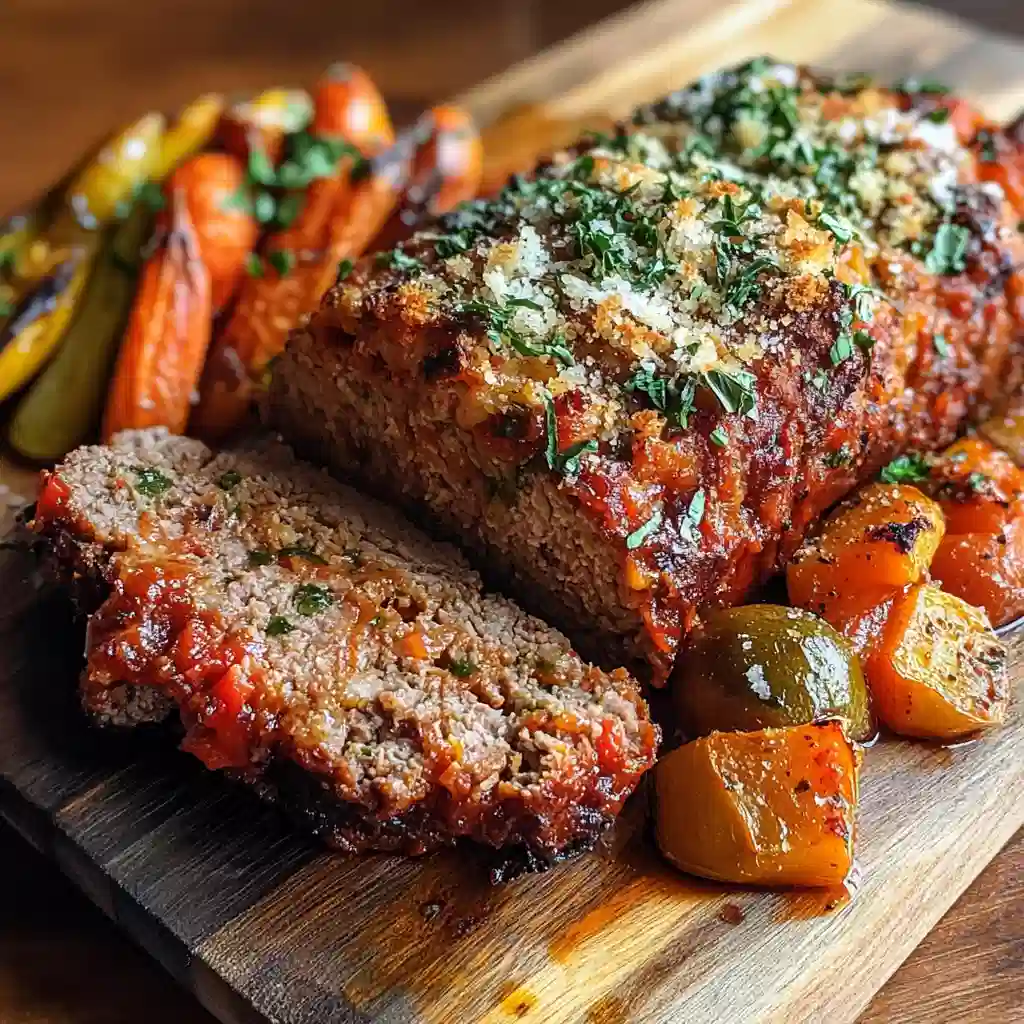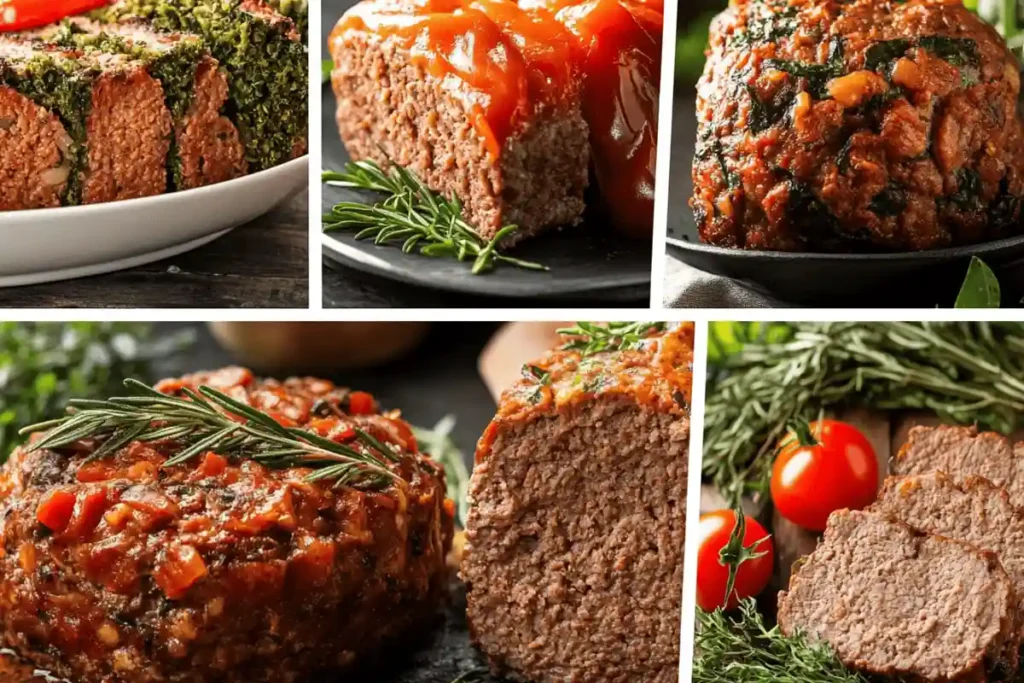What Is the Origin of the Italian Meatloaf? Italian meatloaf, a beloved comfort food, is a dish that’s rich in history and flavor. Known as polpettone in Italy, it’s a culinary creation that has evolved over centuries, influenced by various cultures and traditions. In this article, we’ll dive into the fascinating origins of Italian meatloaf, exploring its ancient roots, historical development, and modern variations. By understanding the past of Italian meatloaf, we can better appreciate the delicious dish that it has become today.
Part 1: the Origin of the Italian Meatloaf
What Is the Origin of the Italian Meatloaf? A Brief Overview
The Rich History Behind the Italian Meatloaf (Polpettone)
Italian meatloaf, known as polpettone in Italy, is more than just a hearty meal. It’s a dish with deep cultural significance and a rich history that spans centuries. From its humble beginnings in ancient Rome to its transformation by Italian immigrants in America, the journey of Italian meatloaf is a testament to the fusion of culinary traditions. The Italian meatloaf, or polpettone, has evolved over time, incorporating regional ingredients and techniques that have shaped it into the beloved dish we know today.
Importance of Understanding the Origin of Italian Meatloaf
Understanding the origin of Italian meatloaf helps us appreciate its place in culinary history and its cultural significance. By tracing the roots of Italian meatloaf, we can see how different regions and time periods have influenced this dish, making it what it is today. This knowledge not only enriches our dining experience but also connects us to the rich tapestry of Italian cuisine, including the beloved polpettone.
Part 2: Historical Background
Ancient Roots of the Origin of the Italian Meatloaf
Italian meatloaf, or polpettone, has its roots in ancient Rome. Roman cuisine often included meat-based dishes, and early versions of Italian meatloaf can be traced back to this period. The Romans used ground meat, combined with ingredients like bread, wine, and spices, to create flavorful and hearty dishes. These early forms of Italian meatloaf were not only delicious but also practical, as they allowed for the use of leftover meat and ingredients.
The recipe for Italian meatloaf evolved over time, influenced by the culinary traditions of the Roman Empire. Ancient Roman cookbooks, such as Apicius, contain recipes that resemble modern Italian meatloaf, showcasing the long-standing tradition of combining meat with various ingredients to create a cohesive dish. The use of bread, cheese, and spices in these early recipes laid the foundation for what would become the Italian meatloaf we know today.
Medieval Europe
As the Roman Empire declined, the culinary traditions of ancient Rome spread throughout Europe, influencing the development of meat-based dishes in medieval times. In medieval Europe, meatloaf-like dishes became popular in regions such as France and Germany. These dishes often featured ground meat mixed with ingredients like grains, vegetables, and herbs, reflecting the local agricultural practices and available resources.

During the medieval period, the concept of Italian meatloaf continued to evolve, with regional variations emerging across Europe. In Italy, the influence of medieval cuisine can be seen in the development of polpettone, which incorporated elements of both Roman and medieval culinary traditions. The use of local ingredients, such as olive oil, garlic, and fresh herbs, distinguished Italian meatloaf from its European counterparts.
The practice of using leftover meat and ingredients to create a new dish was not only economical but also a reflection of the resourcefulness of medieval cooks. This tradition of resourcefulness and innovation laid the groundwork for the rich and diverse culinary heritage of Italy, including the Italian meatloaf.
Part 3: Italian Influence
Italian Immigrants in America and Italian Meatloaf
The story of Italian meatloaf, or polpettone, took a significant turn when Italian immigrants brought their culinary traditions to America in the late 19th and early 20th centuries. As they settled in various parts of the United States, these immigrants adapted their traditional recipes to the ingredients and tastes of their new home. This cultural exchange led to the creation of Italian-American cuisine, which combined elements of both Italian and American culinary traditions.
Italian meatloaf, or polpettone, was one such dish that underwent transformation. Traditional Italian recipes were modified to suit the availability of ingredients and the preferences of the American palate. For example, the use of ground beef became more common, and new ingredients like ketchup and Worcestershire sauce were introduced. This adaptation not only preserved the essence of Italian meatloaf but also made it a beloved comfort food in American households.
Evolution of Italian Meatloaf in America
The evolution of Italian meatloaf in America can be seen through the various regional and family recipes that emerged. Each family added their own twist to the dish, incorporating local ingredients and personal preferences. This resulted in a diverse array of meatloaf recipes that still maintained the core elements of the Italian original.
One key difference between traditional Italian meatloaf and its American counterpart is the choice of ingredients. While Italian meatloaf often includes a mixture of ground meats such as beef, pork, and veal, American versions tend to use primarily ground beef. Additionally, Italian meatloaf recipes often incorporate fresh herbs, garlic, and Parmesan cheese, which give the dish its distinct flavor.
The inclusion of ingredients like eggs, breadcrumbs, and vegetables such as onions and carrots is another hallmark of Italian meatloaf. These ingredients not only enhance the flavor and texture of the meatloaf but also reflect the resourcefulness of Italian cooks who aimed to make the most out of available resources.
Part 4: Modern Variations
Variations of Italian Meatloaf
Italian meatloaf has continued to evolve, with modern variations showcasing the creativity of home cooks and chefs alike. These variations reflect the diverse culinary landscape of Italy and the influence of regional ingredients and cooking techniques.
One popular variation is the Polpettone alla Fiorentina, a Florentine-style meatloaf that includes spinach, pine nuts, and raisins. This version highlights the flavors of Tuscany, with a perfect balance of savory and sweet. Another notable variation is the Polpettone di Tonno, a tuna meatloaf from the coastal regions of Italy. Made with canned tuna, breadcrumbs, and aromatic herbs, this light and flavorful dish is a testament to the versatility of Italian cuisine.

Modern Variations and Cultural Significance of Italian Meatloaf
In modern Italian-American kitchens, chefs often experiment with different ingredients and preparation methods to create unique takes on traditional meatloaf. Some recipes incorporate cheeses like mozzarella or ricotta, while others add vegetables such as zucchini or bell peppers for added texture and flavor. These variations not only bring new life to the dish but also reflect the evolving nature of Italian-American cooking.
Cultural Significance
Italian meatloaf holds a special place in both Italian and Italian-American cuisine. As a comfort food, it embodies the essence of home-cooked meals and family gatherings. The dish’s ability to adapt to different ingredients and cooking styles has allowed it to remain a staple in households across generations.
The cultural significance of Italian meatloaf extends beyond its delicious taste. It represents the resourcefulness and ingenuity of Italian cooks, who have historically made the most of available ingredients to create satisfying and nutritious meals. This tradition of culinary creativity has been passed down through generations, preserving the rich heritage of Italian cuisine.
In Italian-American communities, meatloaf has become a symbol of the blending of cultures and the preservation of culinary traditions. It serves as a connection to the past, while also evolving to reflect contemporary tastes and preferences. The enduring popularity of the origin of Italian meatloaf is a testament to its versatility and timeless appeal.
Part 5: FAQs
Frequently Asked Questions (FAQs)
How to prepare Italian meatloaf?
Mix ground meat with breadcrumbs, eggs, garlic, fresh herbs, and other ingredients. Shape the mixture into a loaf and bake it in the oven until it cooks through. Some recipes top the meatloaf with tomato sauce or wrap it in prosciutto for added flavor.
What is the origin of Italian meatloaf?
The origin of Italian meatloaf, or polpettone, can be traced back to ancient Rome. Early forms of meatloaf were made by combining ground meat with ingredients like bread, wine, and spices. This culinary tradition evolved over centuries, influenced by medieval European cuisine and the resourcefulness of Italian cooks.
How does Italian meatloaf differ from the Italian Meatloaf?
Italian meatloaf often includes a mixture of ground meats, such as beef, pork, and veal, while American versions typically use primarily ground beef. Italian meatloaf recipes also incorporate fresh herbs, garlic, and Parmesan cheese, giving it a distinct flavor. Additionally, Italian meatloaf may include ingredients like spinach, pine nuts, and raisins, reflecting regional variations.
What are some common ingredients in Italian meatloaf?
Common ingredients in Italian meatloaf include ground meat (beef, pork, veal), breadcrumbs, eggs, garlic, fresh herbs (such as parsley and basil), Parmesan cheese, and vegetables like onions and carrots. Some regional variations may also include ingredients like spinach, pine nuts, and raisins.
Part 6: Conclusion
Summary of Key Points
Italian meatloaf, or polpettone, is a dish with a rich history that spans centuries. From its ancient Roman roots to its evolution through medieval Europe and its adaptation by Italian immigrants in America, Italian meatloaf has undergone significant changes while preserving its core essence. The use of ground meat combined with various ingredients like bread, cheese, and spices has remained a constant throughout its history, reflecting the resourcefulness and creativity of Italian cooks.
The modern variations of Italian meatloaf showcase the diversity and versatility of this beloved dish. Regional recipes like Polpettone alla Fiorentina and Polpettone di Tonno highlight Italy’s diverse flavors. Italian-American versions have adapted, adding local ingredients and personal touches, reflecting the culinary heritage of Italian immigrants.
Italian meatloaf holds a special place in both Italian and Italian-American cuisine. Its enduring popularity speaks to its comforting nature, the cultural traditions it represents, and its ability to evolve and adapt to different tastes over time. Whether served as a family meal or in a modern interpretation, Italian meatloaf continues to be a beloved dish around the world.

